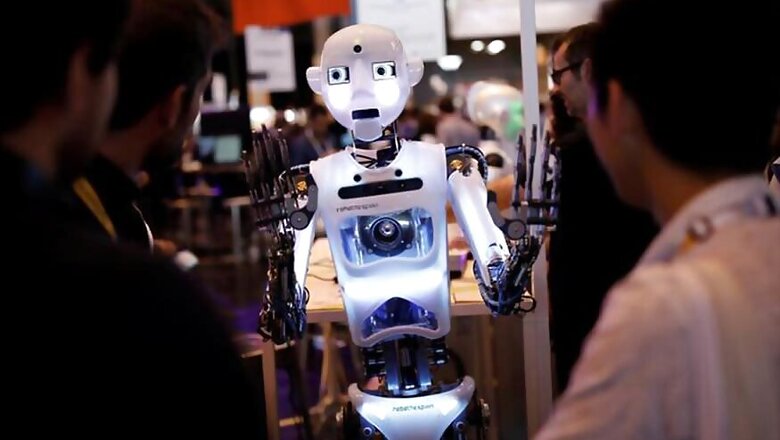
views
Scientists have built a new robotic gripper with soft fingers that can pick up and manipulate a range of objects and perform tasks such as screwing in a light bulb. The team from University of California (UC) San Diego in the US built the gripper that can pick up and manipulate objects without seeing them and need to be trained. The gripper is unique because it brings together three different capabilities. It can twist objects; it can sense objects, and it can build models of the objects it is manipulating. This allows the gripper to operate in low light and low visibility conditions, researchers said.
They tested the gripper on an industrial robot and demonstrated that it could pick up, manipulate and model a wide range of objects, from light bulbs to screwdrivers. "We designed the device to mimic what happens when you reach into your pocket and feel for your keys," said Michael T Tolley, a roboticist at UC San Diego. The gripper has three fingers. Each finger is made of three soft flexible pneumatic chambers, which move when air pressure is applied. This gives the gripper more than one degree of freedom, so it can actually manipulate the objects it is holding. For example, the gripper can turn screwdrivers, screw in light bulbs and even hold pieces of paper, thanks to this design. In addition, each finger is covered with a smart, sensing skin.
The skin is made of silicone rubber, where sensors made of conducting carbon nanotubes are embedded. The sheets of rubber are then rolled up, sealed and slipped onto the flexible fingers to cover them like skin. The conductivity of the nanotubes changes as the fingers flex, which allows the sensing skin to record and detect when the fingers are moving and coming into contact with an object. The data the sensors generate is transmitted to a control board, which puts the information together to create a 3D model of the object the gripper is manipulating. It is a process similar to a CT scan, where 2D image slices add up to a 3D picture. The breakthroughs were possible because of the team's diverse expertise and their experience in the fields of soft robotics and manufacturing, Tolley said. Next steps include adding machine learning and artificial intelligence to data processing so that the gripper will actually be able to identify the objects it is manipulating, rather than just model them. Researchers also are investigating using 3D printing for the gripper's fingers to make them more durable.
Watch Video: Honor 9i Review | The Quad Camera Smartphone | Feat TheUnbiasedBlog




















Comments
0 comment